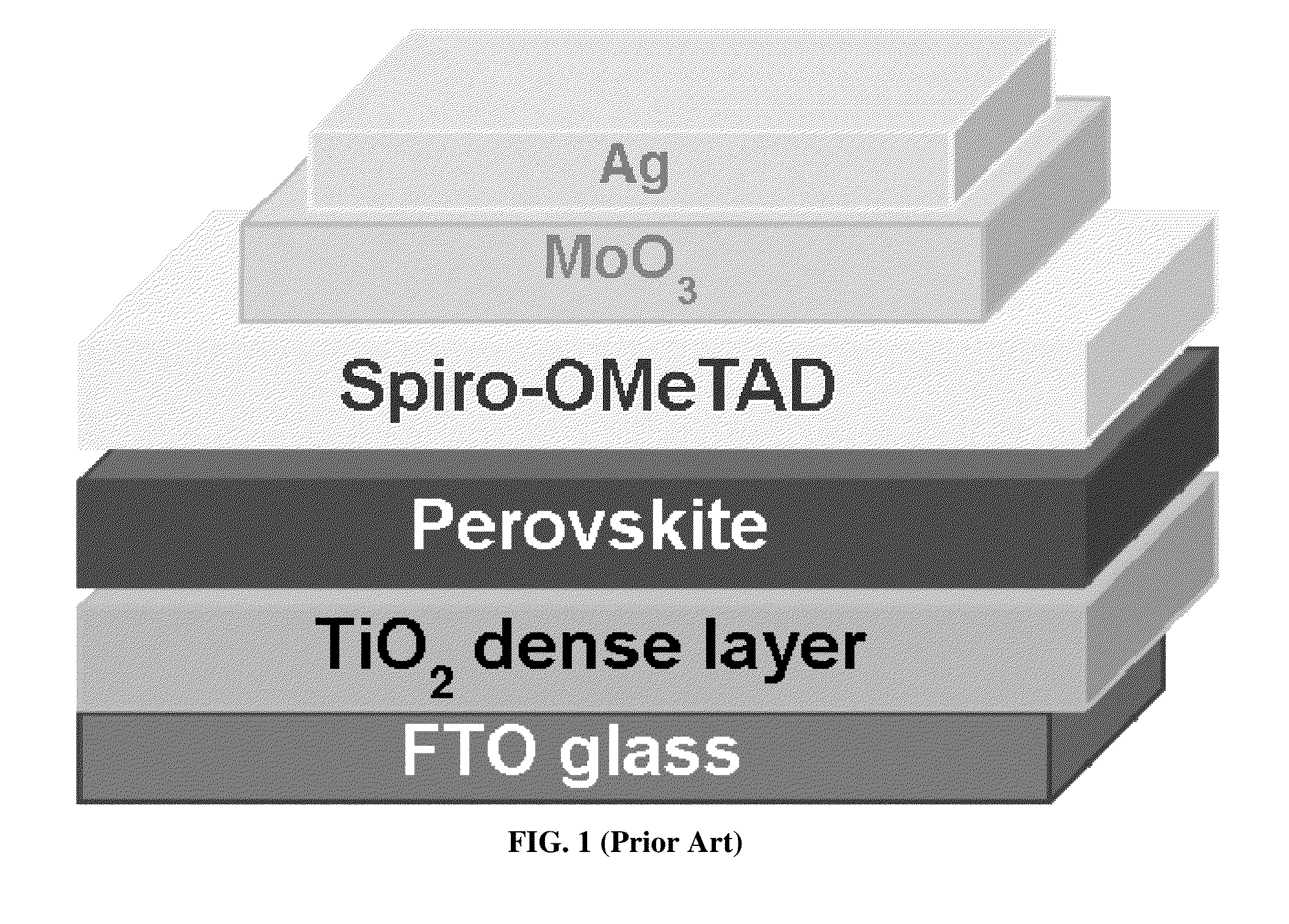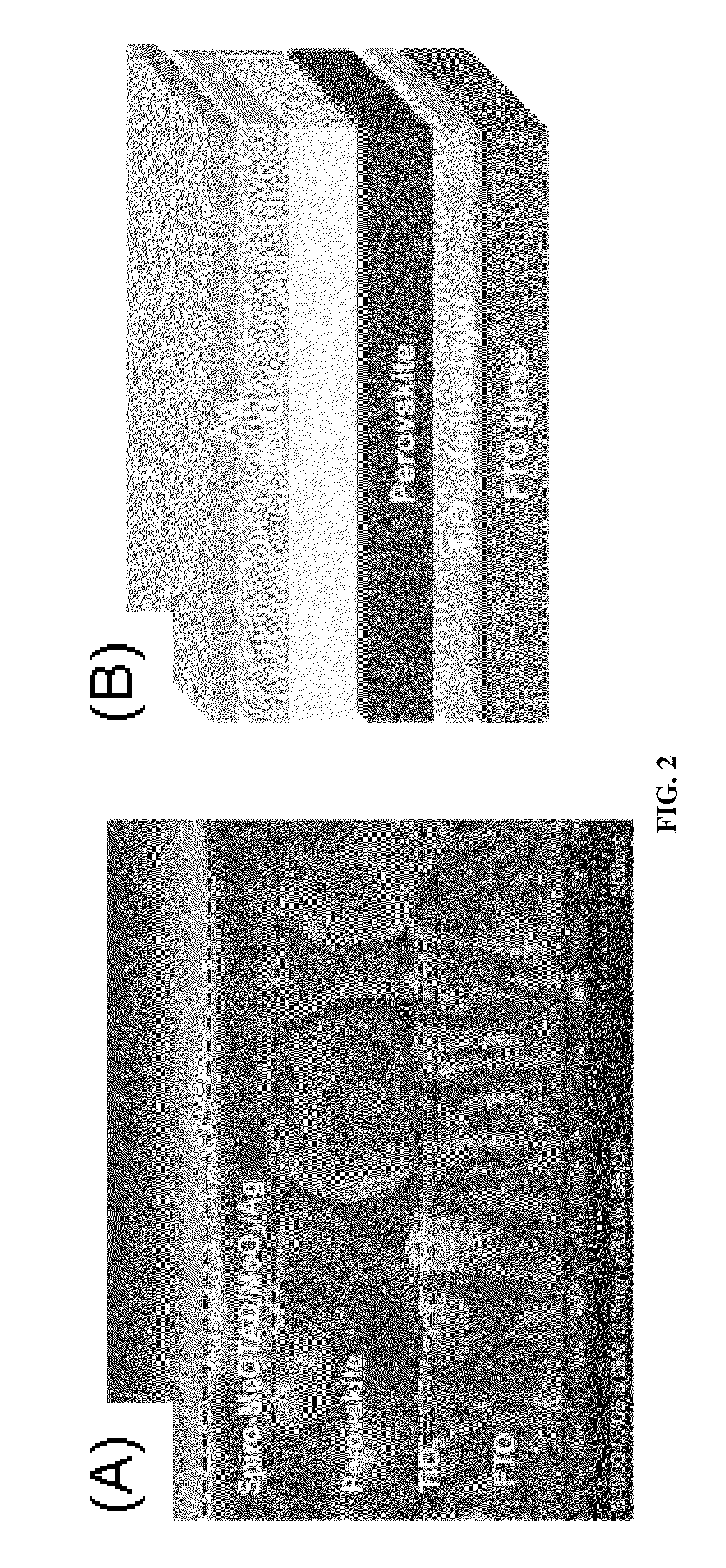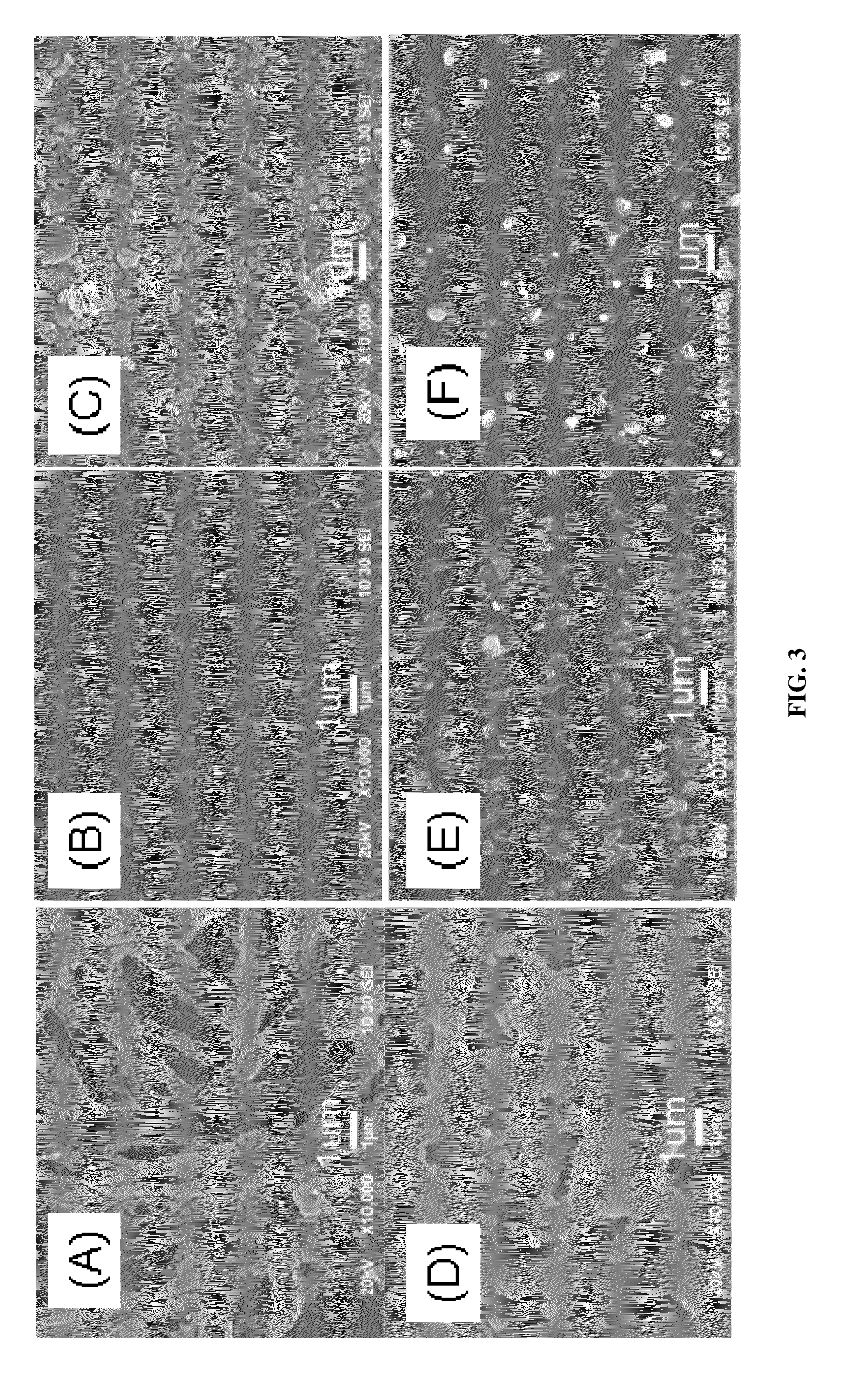Crystal Control and Stability for High-Performance Perovskite Solar Cell
a solar cell, crystal control technology, applied in the direction of metal/alloy conductors, non-metal conductors, conductors, etc., can solve the problems of reducing the efficiency of the cell, achieve high efficiency, improve the quality of the perovskite thin film, and simple and efficient
- Summary
- Abstract
- Description
- Claims
- Application Information
AI Technical Summary
Benefits of technology
Problems solved by technology
Method used
Image
Examples
example 1
[0059]All the fabrication processes were taken in the glove-box that is filled with nitrogen and with less than 1% relative humidity level. Devices were fabricated on the laser etched FTO glass substrates with a sheet resistance of 10˜15 Ω / square. The substrates were cleaned by ultrasonication in soap water, DI water, acetone, 2-propanol, and subjected to an UV-ozone treatment for 30 min. An approximate 30 nm thick dense TiO2 was spin-coated on the substrates by using a 0.15M titanium isopropoxide (TIP) ethanol solution at a speed of 3000 rpm for 30 seconds. Subsequently, the sample was calcinated at 450° C. for 2 hours, in which a slowly heating-up and cooling-down procedure was adopted.
[0060]PbI2 was dissolved in N,N-dimethylformamide at a concentration of 461 mg / ml under stirring at 70° C., which is maintained during the entire fabrication process. After filtration with 0.25 μm pore size filter, the PbI2 layer was deposited by spin-coating on the TiO2 dense layer coated substrate...
example 2
[0063]0.92 gram of PbI2 is dissolved in 2 mL of DMF (Dimethylformamide) solvent. 50 micro liter of HCl is added to the above to improve the solubility and suppress precipitation into elongated crystals during spincoating. Therefore, the ratio of HCl to PbI2 solution is 25:1000. 50 micro liter of the above mixture is spincoated on the dense layer. 30 milligram of MAI (CH3NH3Ix) is dissolved in 1 milli liter of isopropanol, after well-mixed 100 micro liter of this MAI mixture is spincoated onto the dried inorganic part. The above is annealed (heated) at 90 deg C. for 2 hour to promote reaction to form the perovskite layer. The excess (2 organic mixture by volume over 1 inorganic mixture by volume) organic part is rinsed with isopropanol. The excess MAI solution is to ensure that all the inorganic part (PbI2) has been totally reacted with the organic part (MAI).
(A) Solid-layer Configuration
[0064]A1. Film-Quality Control
[0065]The perovskite is deposited onto the dense TiO2 in two steps....
PUM
 Login to View More
Login to View More Abstract
Description
Claims
Application Information
 Login to View More
Login to View More - R&D
- Intellectual Property
- Life Sciences
- Materials
- Tech Scout
- Unparalleled Data Quality
- Higher Quality Content
- 60% Fewer Hallucinations
Browse by: Latest US Patents, China's latest patents, Technical Efficacy Thesaurus, Application Domain, Technology Topic, Popular Technical Reports.
© 2025 PatSnap. All rights reserved.Legal|Privacy policy|Modern Slavery Act Transparency Statement|Sitemap|About US| Contact US: help@patsnap.com



